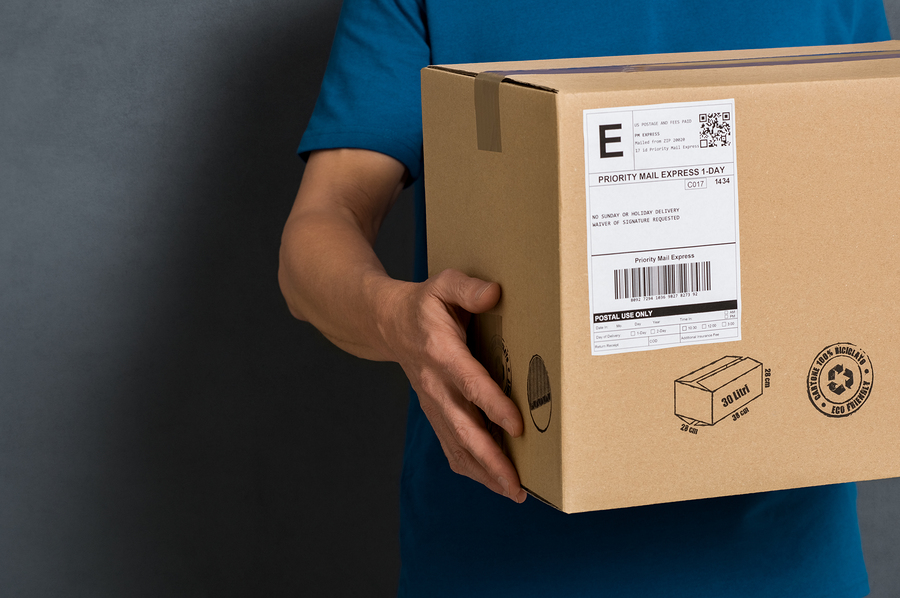Call it the Amazon effect. Point the finger at our culture of instant gratification. Whatever your justification, it’s impossible to deny that online shoppers want their orders right now… and at little to no cost to them.
But these paramount customer demands can be detrimental pain points for even the most seasoned retailers. Even Amazon, the creator of the prevailing gold standard for online order fulfillment, reported a 23% shipping cost increase in their most recent fourth-quarter sales report. What’s more, 61% of people cite high shipping, taxes, and extra fees as reasons to abandon a cart.
Without a right-fit strategy that considers both shopper demands and your bottom line, shipping costs will start eating into your profits. Avoid any shipping-related strain using one or more of these methods.
Use flat rate shipping
Offering flat rate shipping is a simple strategy that, implemented correctly, can almost always come out in your favor. For instance, say your shipping rate is $7.99 flat rate across the board. If a customer buys just one small item, the flat rate should cover all shipping costs. On the flipside, shoppers will feel inclined to make larger orders to take advantage of the relatively small shipping fee.
Flat rate shipping perks:
- The shipping calculation process is simplified.
- Shoppers are incentivized to place larger orders.
- Customers won’t encounter surprise fees at checkout.
- Major carriers including USPS and FedEx offer flat rate shipping options.
The biggest challenge with implementing flat rate shipping is figuring out the dollar amount that works for you — it may take some trial and error.
Evaluate your shipping materials
Are the shipping materials you use cost-effective? As an example, if you order all your supplies from the boxes all the way down to packing tape and tissue paper from one bulk supplier, you may have an opportunity to cut down material costs.
Some more things to consider:
- Ship light, non-fragile items in bubble mailers. They’re a low-cost alternative to boxes for sending smaller, non-fragile items. Plus, if the package comes out to be lighter than 13 oz., you can generally ship bubble mailers through USPS First Class mail.
- Use free USPS Priority Mail boxes.
- Switch from using packing peanuts or bubble wrap to air pillows.
Set a minimum order value
Free shipping is the ultimate deal-sweetener for customers. As such, most shoppers (93%) will take action to qualify for free shipping — including adding to their order.
Wayfair is an example of an e-commerce operation that uses this shipping strategy. The homeware retailer has determined that $49 is an acceptable order value for shoppers to qualify for free shipping.
Much like with flat rate shipping, this strategy is a powerful motivator for your customers to put more items in their carts, which will help cover your shipping costs.
Pro tips for enticing customers to meet your free shipping threshold:
- Create a banner at the top of your website highlighting the amount customers need to meet to qualify for free shipping.
- Place your minimum order value threshold just a tad over your average order size.
- If a shopper heads to checkout without qualifying for free shipping, show how much they need to add to get there. “Add $2.99 to get free shipping on your order!”
If you offer BOPIS, install smart package lockers
Implementing a BOPIS model is the perfect way to help avoid shipping costs, but smart lockers take this strategic fulfillment option to the next level. The innovative technology takes many tasks out of employees’ hands, including finding a place large enough to store orders and notifying customers when their orders are ready for pickup.
More benefits of smart package lockers:
- Your in-store foot traffic can increase.
- Smart package lockers pull double-duty as a hub for hassle-free returns.
- Convenience-driven customers receive a frictionless shopping experience, increasing the chance they’ll shop your brand again.
—
Ready to learn how Smiota’s cutting-edge systems can help you slash your shipping costs? Let’s chat!





